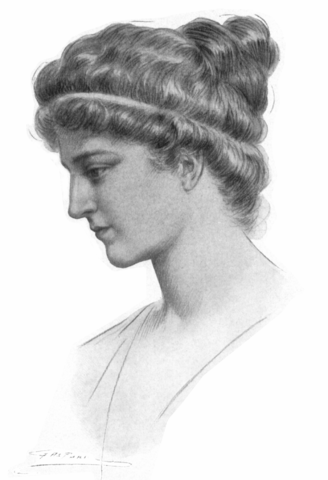Lies to children
Here’s an instructive if somewhat horrifying episode in the history of the history of women in mathematics (and why we need to be careful what we consider as reliable sources, on Wikipedia and elsewhere). It’s mostly drawn from this discussion on Wikipedia, where credit is due to Wikipedia editors Phso2 and Katolophyromai for uncovering it.
It seems that in the early 20th century, Elbert Hubbard wrote a series of historical fiction pieces aimed at children, collected in his 14-volume Little Journeys to the Homes of Great Teachers. One of the volumes (first published in 1908) includes a story about Hypatia. We don’t know much about Hypatia’s actual life, so Hubbard’s story is almost entirely made up from Hubbard’s own imagination: the training regimen her father set her, her journey to Athens to visit Plutarch, the 20th-century rationalist doctrines her father instilled in her (later to be attributed as quotes to her), all fiction.
But in the late 20th century, some authors began collecting information about the lives of women mathematicians, and were not very careful about where this information came from. One of these was Lynn M. Osen, who published Women in Mathematics as a work of scholarship through the MIT Press in 1974; Osen relied heavily on Hubbard for her coverage of Hypatia. From Osen the fiction spread to Margaret Alic, whose Hypatia’s Heritage: A History of Women in Science from Antiquity to the Late Nineteenth Century (Women’s Press 1986) in turn relied on Osen. And as recently as 2007, Lisa Yount’s A to Z of Women in Science and Math (Infobase Publishing) continued to include the same myths. Apparently (the Wikipedia article now says) at least one college course was based on this material, as well. Jules Maurice Gaspard’s equally-fictional cover image for Hubbard’s story (below) has now become “by far, the most iconic and widely reproduced image” of Hypatia.

Fortunately, all this has now been rooted out of the historical part of the Wikipedia Hypatia article, and relegated to a section on modern fictional treatments of Hypatia, where it is clearly marked as non-factual. But Osen, Alic, and Yount continue to be used as the sources for several other Wikipedia articles. If they were this sloppy about Hypatia, who knows what other made-up claims from them are still being treated as factual? Or which other sources, cribbing from these ones, will continue to be thought reliable?
(G+)